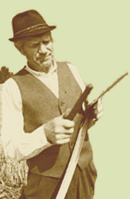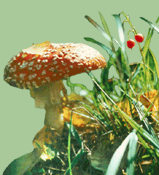Semi-natural communities: heritage for the future?
Toomas Kukk explains the current state of semi-natural communities and looks into the future that seems rather optimistic. He clarifies the definition and gives a brief history of the development of such unique communities. According to the Habitats Directive, there are 13 different types of semi-natural communities in Estonia. About 50 years ago, Estonia lost most of its long-evolved semi-natural communities. However, it is still possible to restore a number of these. The most valuable are wooded meadows, since these enrich the landscape the most. In the end, the author gives advice about how to maintain our valuable heritage.
Sacred grove as a heritage landscape
Ahto Kaasik describes the sacred groves as a holy part of heritage culture and heritage landscape. Sacred groves are formed by traditional behavioral norms. The author explains the development and loss of sacred groves and gives the status quo of sacred groves in Estonia today. The article is finished with tips about how to maintain the existent groves.
Essay: A desert can hurt
Hannes Palang reflects on his desert experiences.
The corncrake is threatened by mowing machines
Irina Herzon and Maaria Semm introduce a human-dependent bird the corncrake, a threatened species throughout Europe. Most of corncrakes inhabit cultural meadows. In order to save the birds, the meadows should be mowed from inside to outside, and not before the end of July.
Eesti Loodus enquires
Tiit Sillaots comments the system of nature conservation payments within European Union.
Bert Holm writes about the fight against the hogweed Heracleum sosnowskyi.
A bottle of good water, please!
Urmas Kokassaar helps the reader to find the right type of water. Most of todays bottled waters are flavoured, some of them are even enriched with vitamins.
Mihkli nature protection area
Piert Kiristaja introduces one of the most magnificent maintained oak groves in Mihkli, Western Pärnumaa. The oak grove dates back to about 1750 and it is protected as a botanical-zoological reserve.
European rarities in Estonia
Riinu Rannap features the northern crested newt (Triturus cristatus) an amphibian threatened in Estonia as well as in all Europe. To save the species, we have to take care of small clean waterbodies and their surroundings.
Interview:
Toomas Kukk has interviewed Aivar Kriiska, an archeologist.
The Sinimäe hills torn by wars
Andres Tõnisson and Ivika Maidre recall an important date in the history of Estonia 60 years from the battle of Sinimäe hills, and describe the development of the strange hills. In a peculiar way, the battle events as well as the geology of the hills are still pretty much of a puzzle for scientists.
The real impact of mines
Enn Soovik looks at the impact of oil-shale mines on the environment.
Life on the Karakoram Highway
Helle-Mai Pedastsaar shares her expressions on the road connecting China and Pakistan. The highway is as terrifying as it is exciting. The highway finds its way in a very difficult landscape, through mountains and river valleys, and is equipped with hundreds of scary chain bridges.
Practical tips: some advice on photographing waterfowl
Jaanus Järva recommends tips that enable to take pictures of waterfowl on the water level.
The second third of the trip from Kuivastu to the end of Sõrve peninsula
Bruno Pao continues the journey, reaching from the Kõljala manor house to Nasva, guiding the reader to the sights of sea culture and military landscapes.
| 

![[IN ENGLISH]](images/gb.gif)





